Key takeaways:
- Permaculture creates sustainable ecosystems by promoting biodiversity and efficient resource use, reflecting nature’s patterns.
- Organic wine production adheres to ecological health principles, enhancing flavor and quality through natural farming practices.
- Implementing permaculture in vineyards reduces resource inputs, improves soil health, and leads to more resilient farming practices.
- The integration of technology in permaculture could enhance wine production while adhering to sustainable principles.
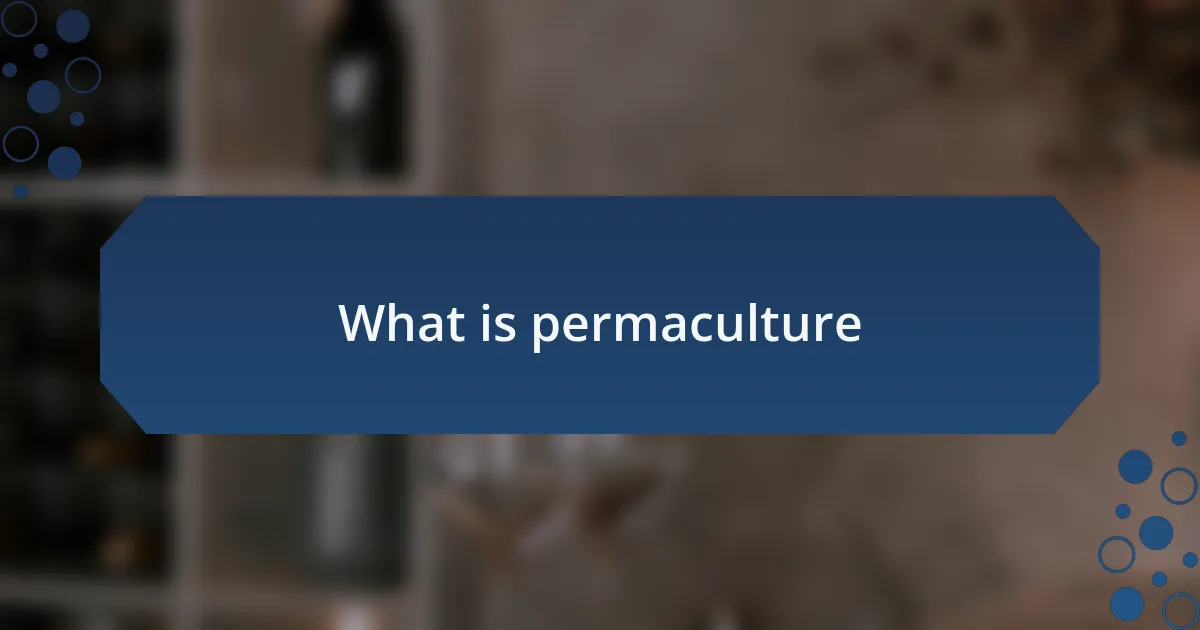
What is permaculture
Permaculture is a sustainable design philosophy that seeks to create harmonious ecosystems mirroring nature’s own patterns. I remember the first time I truly grasped the concept; I had this “aha” moment while walking through a well-designed garden that flourished without synthetic inputs. It was a revelation to realize that this approach not only nurtured the environment but also provided abundant yields.
At its core, permaculture emphasizes the interconnectedness of all living things and promotes practices that support biodiversity. Have you ever considered how nature balances itself? For instance, a diverse plant community can naturally repel pests and enhance soil quality, allowing each component to play a role in the overall health of the ecosystem. This interaction inspires me to think about how our agricultural practices can be adjusted to reflect these principles, fostering resilience and productivity without compromising the environment.
In addition to nurturing biodiversity, permaculture also focuses on the efficient use of resources. I recall experimenting with a rainwater harvesting system in my own small garden, which not only reduced my water bill but also encouraged a renewed appreciation for every drop of water. It makes me wonder—what if more vineyards adopted such practices? Imagine the positive ripple effects on both the land and the quality of wine produced. Each of these elements underscores a deeper philosophy where working with nature, rather than against it, can lead to thriving ecosystems and sustainable agricultural practices.
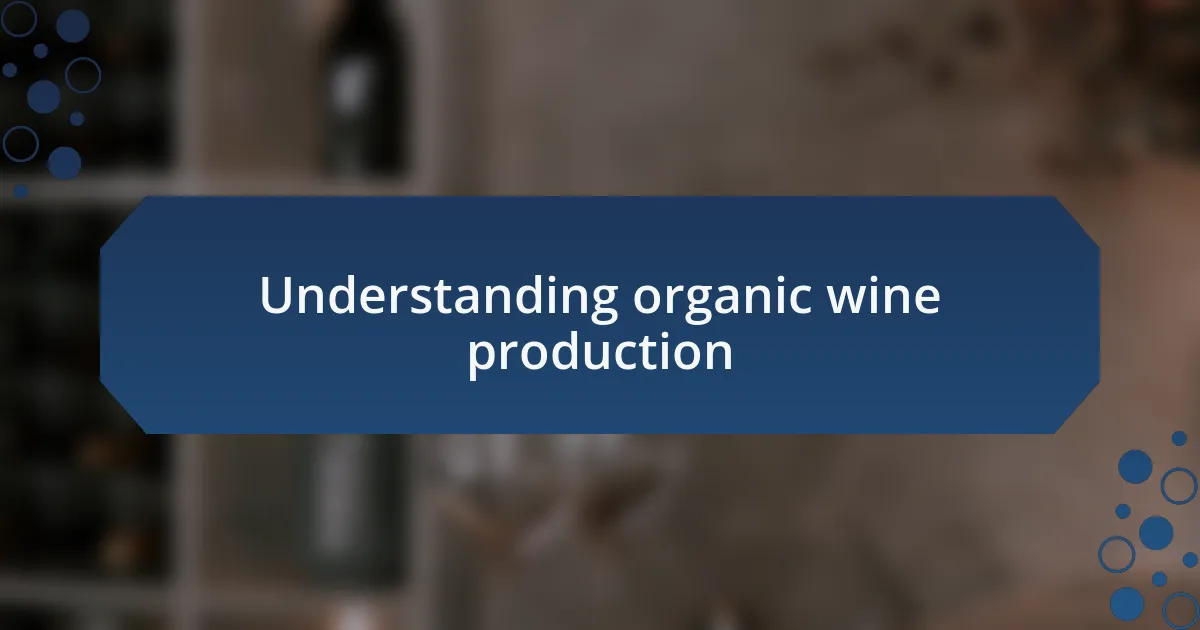
Understanding organic wine production
When discussing organic wine production, it’s essential to understand the principles that guide it. This method prioritizes the health of the ecosystem, relying on organic farming practices that avoid synthetic pesticides and fertilizers. My first experience with organic grapes was enlightening; tasting the difference in flavor and aroma was eye-opening. How could something that’s grown naturally seem so vibrant and alive?
Organic wine production is fundamentally about letting nature take the lead. In my own garden, I’ve seen the beauty of biodiversity at work, where companion planting significantly reduced disease and increased yields. Isn’t it fascinating to think that a vineyard could thrive on the same principles? Grapes grown in these cycles often reflect the place they come from more vividly, imparting unique characteristics that tell the story of their environment.
Moreover, organic practices encourage a healthy relationship between the vine and the soil. I once visited an organic vineyard that employed cover crops to enrich the soil, and the energy of the place was unmistakable. Can you imagine the satisfaction of sipping a wine that not only tastes good but is also a product of a holistic approach to farming? By understanding organic wine production, we can appreciate how every sip encompasses the dedication to sustainability and respect for nature.
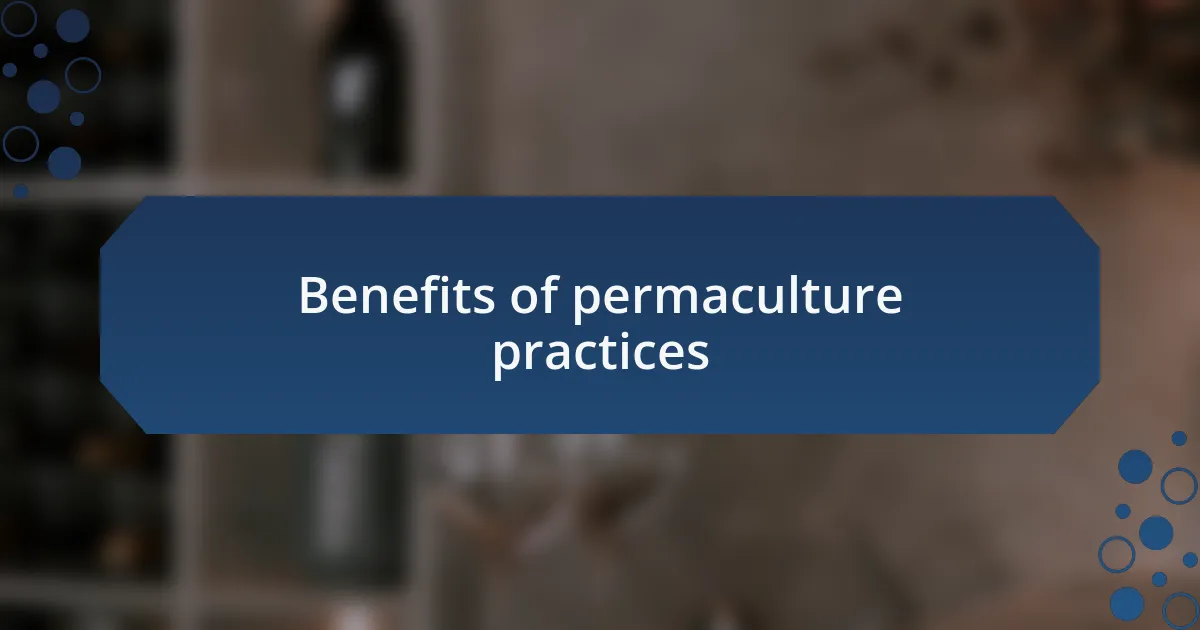
Benefits of permaculture practices
Practicing permaculture in vineyard management comes with profound benefits that extend beyond mere aesthetics. When I first witnessed the integration of permaculture principles, such as planting diverse crops alongside the vines, I was struck by how much healthier the ecosystem appeared. The vibrant activity of pollinators and the rich, layered habitat made me wonder: how can we ignore such natural synergy and beauty?
Another significant advantage is the reduction of resource inputs. In my experience managing a small garden, I found that establishing a robust ecosystem led to less dependency on water and fertilizer, which not only saved costs but also fostered resilience. Imagine a vineyard thriving with minimal irrigation, where the vines adapt to their environment, creating a wine that is a pure expression of its terroir.
Additionally, permaculture enhances soil health, cultivating fertile ground for future generations. I remember the joy I felt after implementing composting and natural mulching techniques in my backyard; the soil transformed, teeming with life. Isn’t it reassuring to know that by caring for our soil, we are not just nurturing our vines, but also investing in the longevity of our agricultural systems?
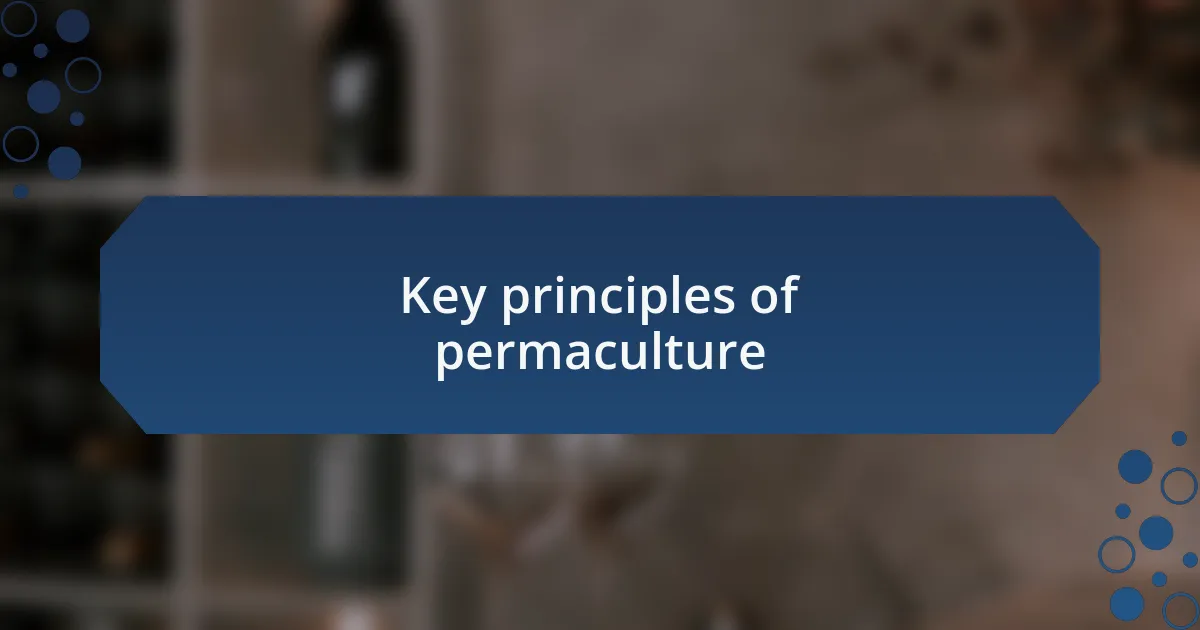
Key principles of permaculture
One key principle of permaculture is the observation and interaction with the environment. I distinctly remember standing in my garden, taking the time to watch how the sunlight danced across the leaves and how different plant species thrived in particular spots. This simple act made me realize that by spending time observing your vineyard, you can identify natural patterns and make informed decisions that align with the ecosystem.
Another core principle is the concept of diversity. For me, adding a variety of plants alongside grapevines didn’t just create a picturesque landscape; it attracted beneficial insects and strengthened the overall health of the vineyard. I often think about how much richer wines can be when the surrounding flora contributes to the vineyard’s biodiversity. Isn’t it fascinating how nature thrives on variety?
Lastly, permaculture emphasizes the importance of stacking functions. This means every element in the ecosystem should serve multiple purposes. When I built a simple insect hotel in my garden, I was amazed at how it created habitats, attracted pollinators, and reduced the need for chemical interventions. How many layers of benefit can we find in our approach to wine production if we start thinking about each component as a multi-functional asset?
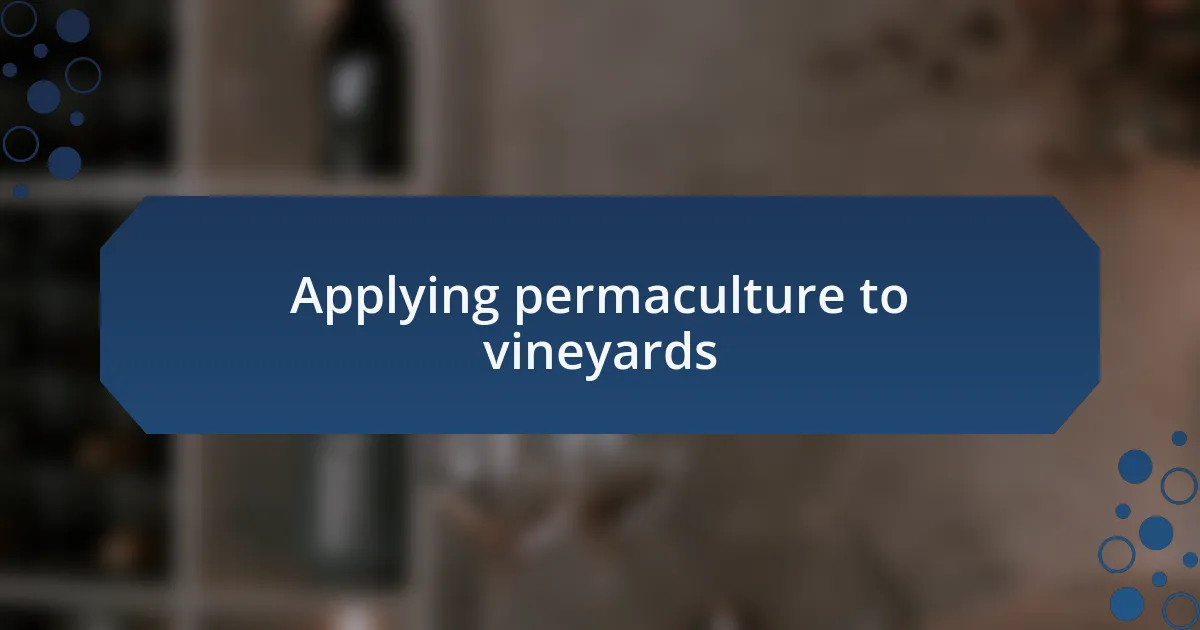
Applying permaculture to vineyards
Applying permaculture principles to vineyards can transform not only the health of the crops but also the flavors of the wine produced. I remember visiting a vineyard that embraced this philosophy; they had interplanted flowers throughout the rows of grapevines. The scent of lavender wafting through the air made the experience unforgettable, and I couldn’t help but think about how this biodiversity might enhance the wine’s aroma profile.
In my own small vineyard experiment, I noticed that by integrating ground cover plants, I saw a noticeable decrease in soil erosion. The lush vegetation not only retained moisture but also acted as a natural mulch, enriching the soil. How rewarding it was to see the vibrant growth all around! Have you ever thought about how small changes like these can lead to healthier harvests and a more sustainable practice overall?
Creating living barriers with native shrubs and plants is another practice I’ve embraced that aligns beautifully with permaculture. On a particularly windy day, I saw firsthand how these barriers helped protect my vines; it was almost as if the plants were working together as a natural shield. I often wonder how many vineyards overlook such simple solutions that not only enhance resilience but also build a sense of harmony within the ecosystem.
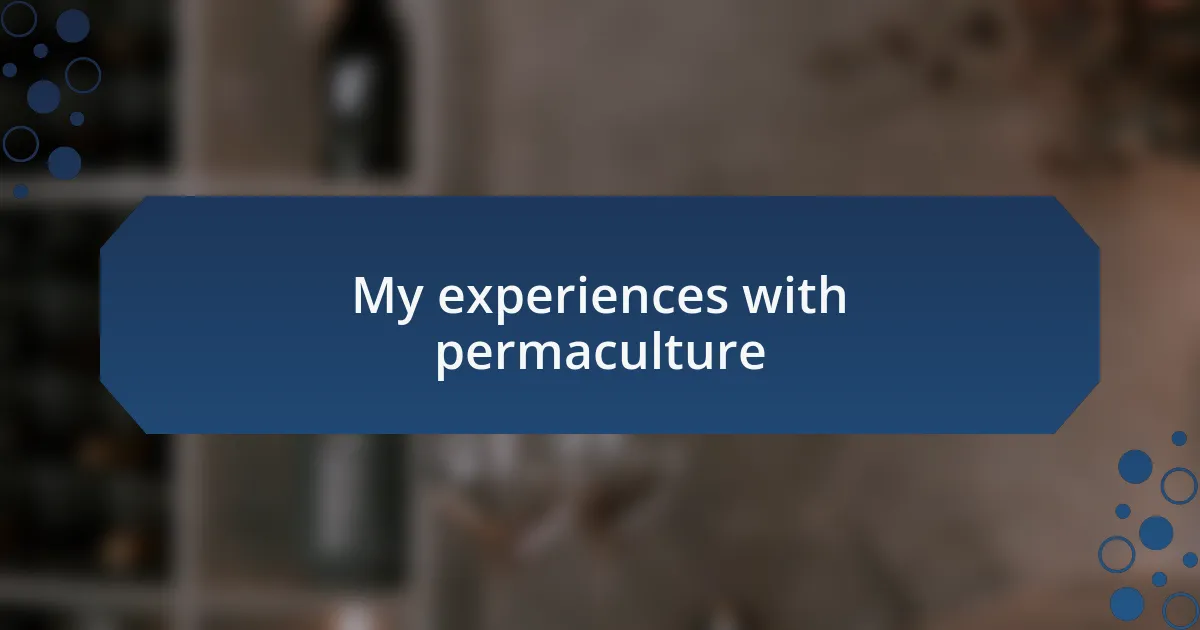
My experiences with permaculture
In my journey with permaculture, I often find myself reflecting on how the cyclical nature of this approach has changed my perspective on farming. One memorable instance was when I observed a wildlife-friendly composting system at a local vineyard. I was struck by how the worms seemed to thrive among the scraps, turning what could have been waste into nutrient-rich soil. It made me realize how interconnected our efforts can be with nature’s processes.
I distinctly recall planting a mix of herbs between my grapevines as an experiment. The vibrant scents of basil and rosemary not only delighted my senses but also attracted beneficial insects. Watching ladybugs flutter around brought me such joy, and I began to appreciate how a little diversity could lead to a symphony of life in the vineyard. Have you ever considered how the smallest additions can create such a rich ecosystem?
Another powerful experience was when I designed a simple rainwater catchment system. After a heavy rain, I was thrilled to see how effectively it diverted water to my plants. Knowing that I was harnessing nature’s resources while reducing my reliance on external water sources filled me with a sense of purpose. It’s fascinating to think about how these conscious choices can lead to a more resilient vineyard—how often do we think about sustainability in our daily practices?
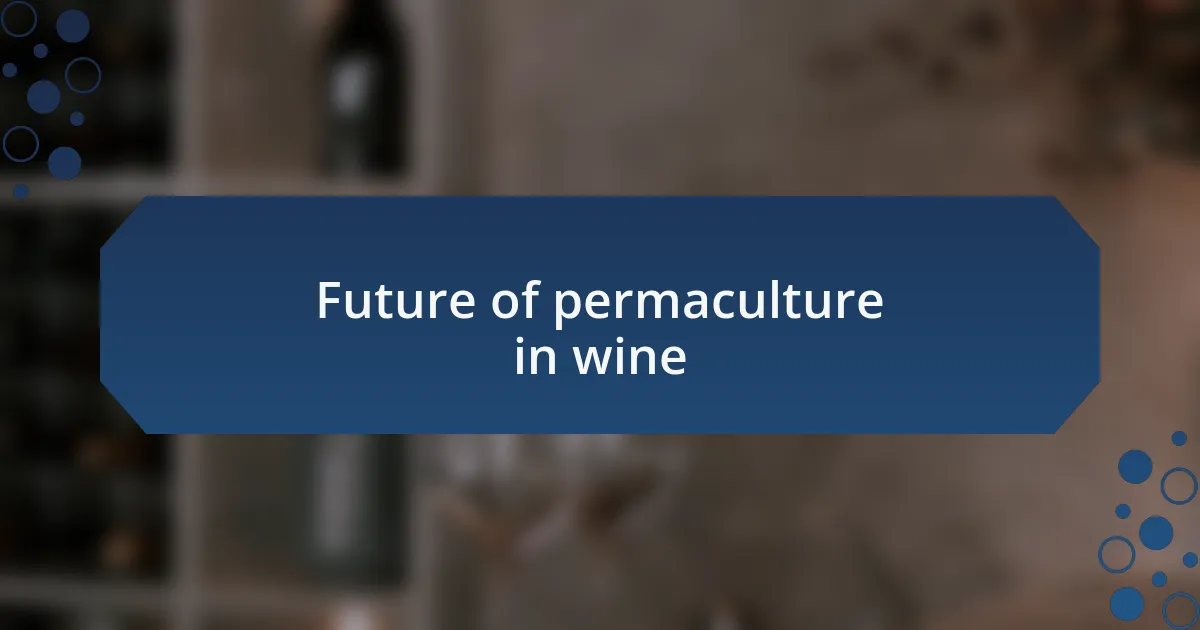
Future of permaculture in wine
The future of permaculture in wine production excites me, especially when I think about integrating more natural pest control methods. I recall a time when I introduced a few native plants to my vineyard, and the change was remarkable; they not only attracted pollinators but also kept pests at bay. Isn’t it incredible to think how nature often holds the answers to challenges we face?
As I explore future possibilities, I envision a vineyard where cover crops play a central role. I once experimented with clover, which not only improved soil health but also helped prevent erosion during heavy rains. Have you ever considered how enriching the soil with diverse plants could transform the entire landscape of wine production?
Looking ahead, I believe that technology will play a crucial role in advancing permaculture techniques in the wine industry. With the advent of precision agriculture, I see immense potential for optimizing resources while maintaining the philosophies of permaculture. It raises a compelling question: how can we harness this technology to stay true to our sustainable roots and connect even more deeply with the land?